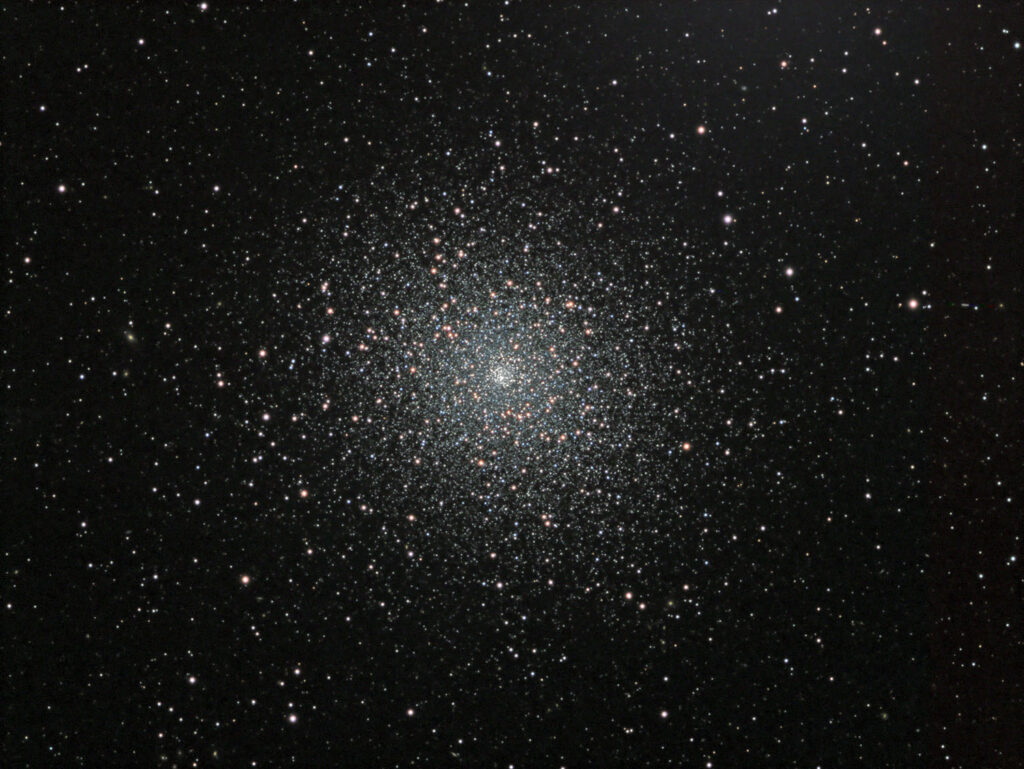Messier 5
Globular Cluster, Serpens
- Description
- Technical
- Links
Messier 5 or M5 (also designated NGC 5904) is a globular cluster in the constellation Serpens. It was discovered by Gottfried Kirch in 1702.
M5 is, under extremely good conditions, just visible to the naked eye as a faint “star” 0.37 of a degree (22′ (arcmin)) north-west of star 5 Serpentis. Binoculars and/or small telescopes resolve the object as non-stellar; larger telescopes will show some individual stars, of which the brightest are of apparent magnitude 12.2.
M5 was discovered by German astronomer Gottfried Kirch in 1702 when he was observing a comet. Charles Messier noted it in 1764 and – a studier of comets – cast it as one of his nebulae. William Herschel was the first to resolve individual stars in the cluster in 1791, counting roughly 200.
Telescope: Astro Physics 175EDF f8.3
Mount: Astro Physics 3600GTO “El Capitan”
Camera: SBIG STT8300
Guider: Mini Borg 50 / SBIG STi
L: 30×2 mins = 60 mins, R: 30×2 mins = 60 mins, G: 30×2 mins = 60 mins, B: 30×2 mins = 60 mins
Total Imaging Time: 4h 00m
Data Imaged remotely over 2 nights during June 2018.
Data acquisition & Processing by David Churchill.
None

